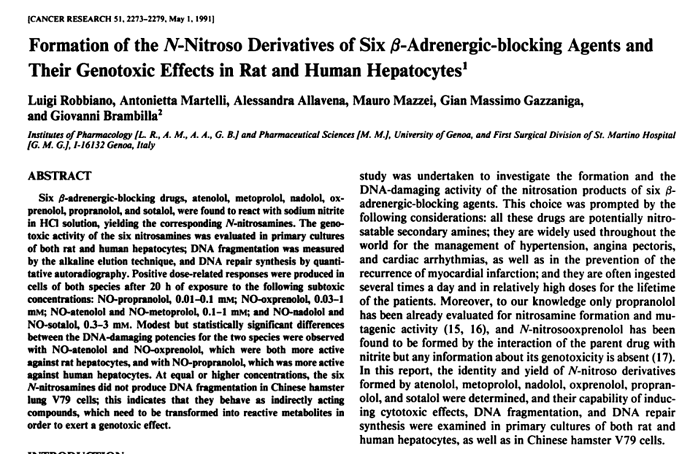Anyone having idea about AI limit of Nitroso Atenolol?
What could be the AI limit as per read across approach?
@hgajjar Not for Atenolol, but Health Canada reported voluntary recalls of Propranolol
https://recalls-rappels.canada.ca/en/alert-recall/pfizer-recalls-inderal-propranolol-hydrochloride-capsules-due-nitrosamine-impurity
However, the alert does not mention a AI or limit. Should we assume that the default AI 18ng/day?
For a nitrosamine impurity not included in the table, MAHs and applicants should refer to the ICH M7 guideline for recommendations on how to derive an AI limit. In cases where there is insufficient carcinogenicity data available for a nitrosamine impurity, MAHs and applicants may:
- apply the class-specific threshold of toxicological concern (TTC) of 18 ng/day for nitrosamine impurities as a default limit
- conduct a structure-activity relationship assessment with read-across to justify a limit higher than 18 ng/day
@Naiffer_Host , there is possibility for formation of N nitroso Atenolol because API structure itself having secondary amine. We did testing of API and Tablets and observed Nitroso Atenolol more than 18ng/day.
A good article to review by Robbiano et al. “Formation of the N-nitroso derivatives of six b-Adrenergic-blocking Agents and their Genotoxic Effects in Rat and Human Hepatocytes”
Formation_of_the_N-Nitroso_Derivatives_of_Six_b-Ad.pdf (1.5 MB)
Hi, @hgajjar.
I think the discussion on N-nitroso-propanolol is helpful to you.
In this thread, the link to an interesting paper was shared by @Diego_HM.
Practical and Science-Based Strategy for Establishing Acceptable Intakes for Drug Product N-Nitrosamine Impurities | Chemical Research in Toxicology (acs.org)
Structural group 5 suggests 440ng/day. However, I am not sure this is acceptable to health authorities.
Any update of N-Nitroso Atenolol AI limit till date
Any official limit has beeb established until now, however EMA aknowledges the industry evaluation on all the beta blockers:
Industry presentation (3rd file):
Therefore for EU countries you can apply the temporary limit (178 ng/day) for one year or propose a wider limit if it is supported by scientific avaluation (i.e. read-across with known nitrosamines).
